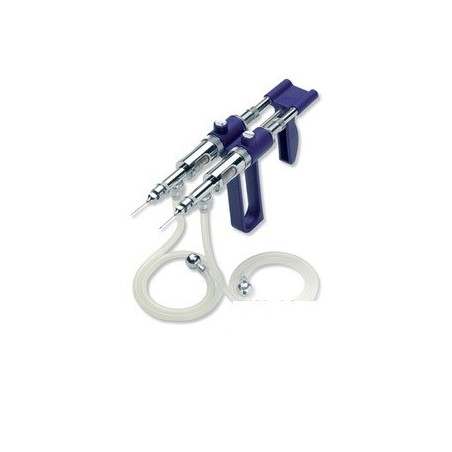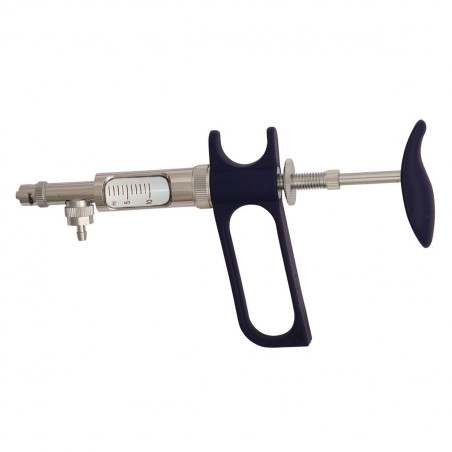Paper
Martinson B, Minion FC, Krollb J, Hermann J. Age susceptibility of caesarian-derived colostrum-deprived pigs to Mycoplasma hyorhinis challenge. 2017. Veterinary Microbiology. Vol 210, 147-152.

What are they studying?
Mycoplasma hyorhinis (Mhr) most commonly causes polyserositis and polyarthritis in three-to ten-week old pigs. Literature has suggested the existence of an age limitation to susceptibility to Mhr, but Literature has suggested an age limitation to the susceptibility of Mhr but this was difficult to test until recently due to the inability to reproduce the disease experimentally.
How was it done?
The study assessed a Mhr challenge model using cell-associated challenge material in the same litters of animals at seven, ten, thirteen, and sixteen weeks of age. The experimental infection protocol for Mhr uses caesarean-derived, colostrum-deprived pigs, conditions that lead to severe pericarditis and lameness. Pigs in each age group were inoculated with Mhr on three consecutive days: a 20 ml/intraperitoneal injection on day 0, a 10 ml/intravenous injection on day 1, and a 10 ml/intranasal application (5 ml/nostril) on day 2. Non-challenge age-matched controls were included. Pigs were observed daily for lameness from the first challenge day through day 21 post-challenge. Weight measurements were taken just prior to challenge and just prior to euthanasia on day 21. Following euthanasia, a gross pathological examination for evidence of polyserositis was performed. 2 swabs were collected for each pig: a pericardial swab and a single swab from the articular surfaces of both elbows and both stifles. Pleural and serosal swabs were taken from only those animals exhibiting pleuritis or peritonitis.
What are the results?
- Incidence of lameness was similar at seven, ten, and thirteen weeks of age (> 60 %) with fewer animals affected (33 %) at sixteen weeks of age.
- The number of animals with arthritis fell from 100 % at seven weeks of age to 25 % at sixteen weeks of age.
- Pericarditis fell sharply from 87% at seven weeks to 4 % at sixteen weeks of age.
- ADG was at least 270 g/day (0.6 lbs/day) less than the age-matched non-challenged control groups
- The biggest ADG difference was seen at thirteen weeks of age (545 g/day, 1.2 lbs/day).
What implications does this paper have?
Results of this study show that pigs were susceptible to Mhr-associated lameness at least until sixteen weeks of age while susceptibility to Mhr-associated polyserositis appeared to peak at seven weeks of age. Economic losses due to Mhr can be attributed to reduced performance (weight gain and feed conversion) and culling.
Determining the age of greatest M hyorhinis susceptibility can define the required duration of immunity for any potential vaccine as well as provide guidance to optimize the use of antibiotic treatments.
|
During the post-weaning phase, polyserositis is possibly one of the most frequent clinical pictures. Obviously the frequency and severity of polyserositis is greater when animals are confronted with, at the same time, a viral disease such as PRRS or swine influenza. In fact, it was with the arrival of the PRRS that we began to see serious pictures of polyserositis. We had always related polyserositis to infections by H. parasuis or S. suis, and it has not been until recently that M. hyorhinis has been also considered another possible cause. The presence of more than one pathogen involved in the clinical picture is normal, and therapeutic strategies must be complex because they must seek control of the different agents involved. The work findings are interesting because they suggest that the severity of the infection varies depending on when it occurs and, specifically, that the later it occurs, the less serious the infection is. With the current progressive reduction in the use of antibiotics, which implies that the use of several molecules in the same medication will be an exceptional situation, the problems in the post-weaning phase will be more difficult to control. In this sense, we must start thinking about new control strategies. In the case of infection by M. hyorhinis, as with the other mycoplasmas, piglets become infected from sows and, quite possibly, the precocity of the infection depends on the piglets' degree of colonization. If this were the case, would a medication given to the sows at pre-farrowing reduce colonization of the piglets as is the case with M. hyopneumoniae? And if this colonization were reduced, would the onset of the disease be delayed? And if it were delayed, would its severity be reduced as the article claims? Early control of M. hyorhinis would allow to focus efforts on fighting off the other germs that are involved in polyserositis or perhaps, being optimistic and imagining that this was a primary germ in the process, maybe its control would be enough to return to normality. I think we are not yet qualified to answer the questions I ask, but the mere fact that an article is at the root of them is stimulating. The more we know about the epidemiology of M.hyorhinis, the more possibilities we will have of finding new strategies for its control. |









